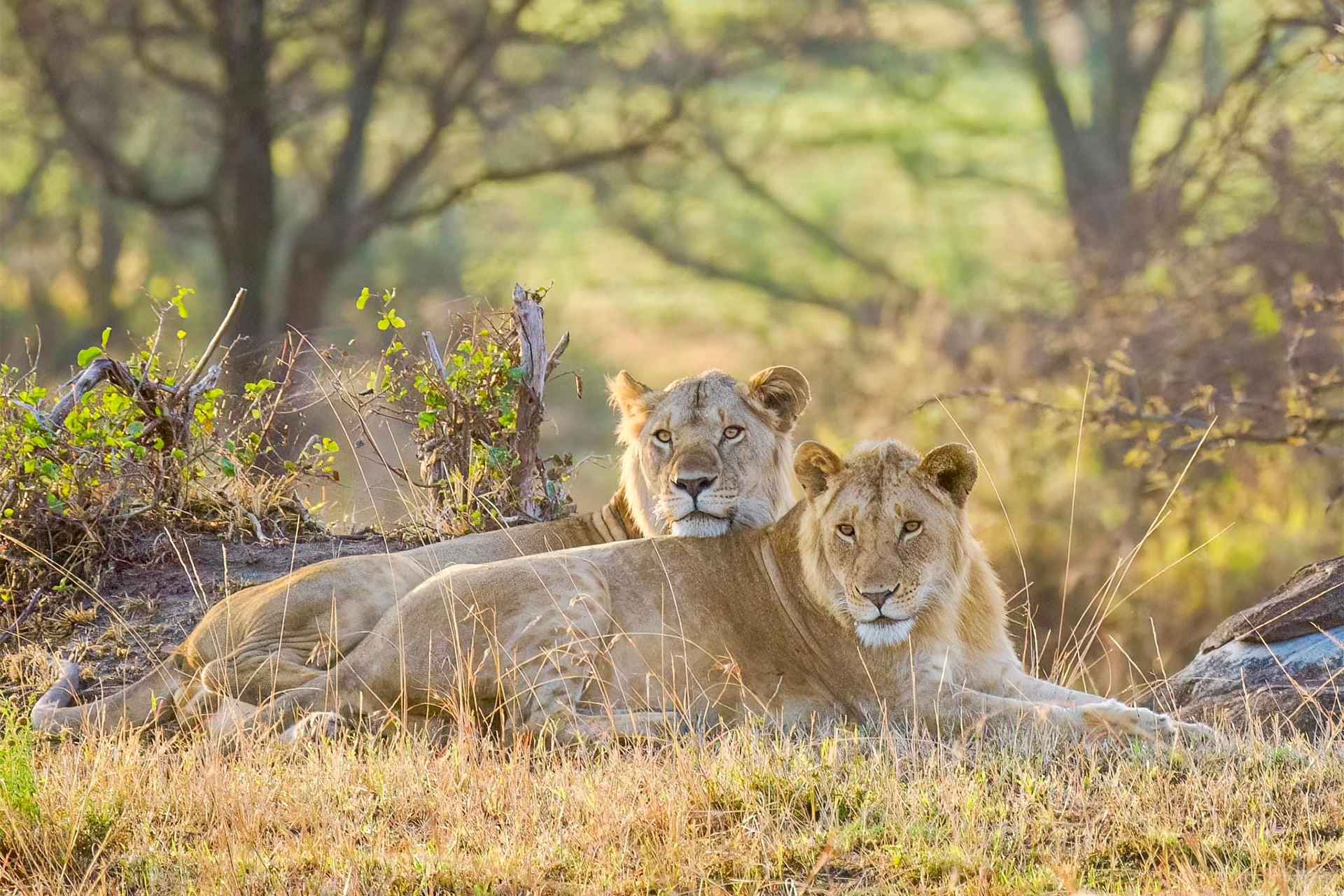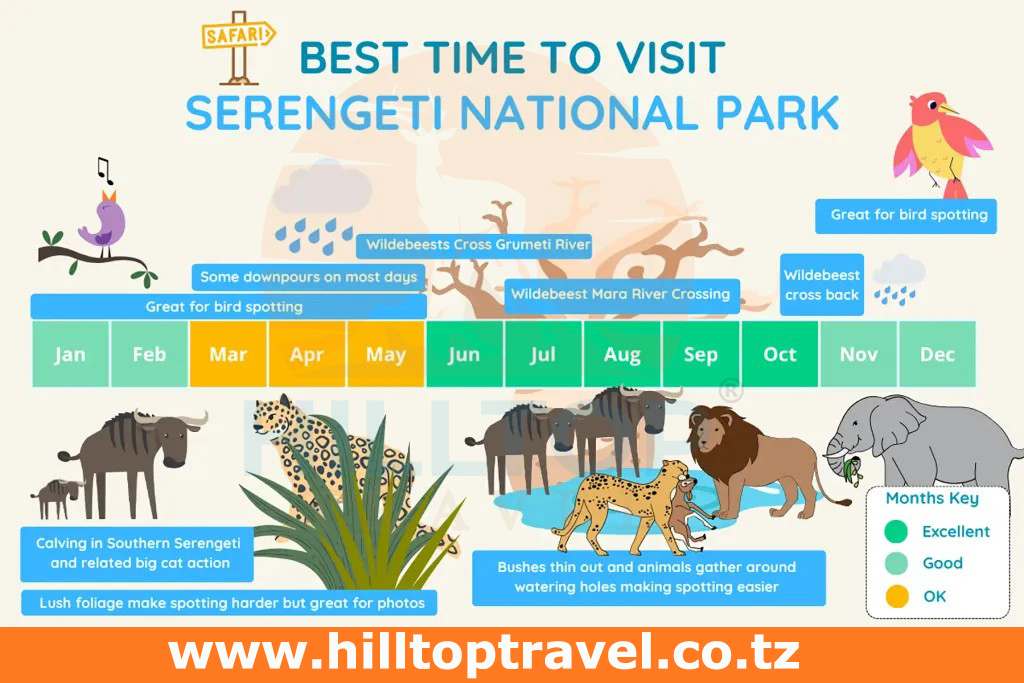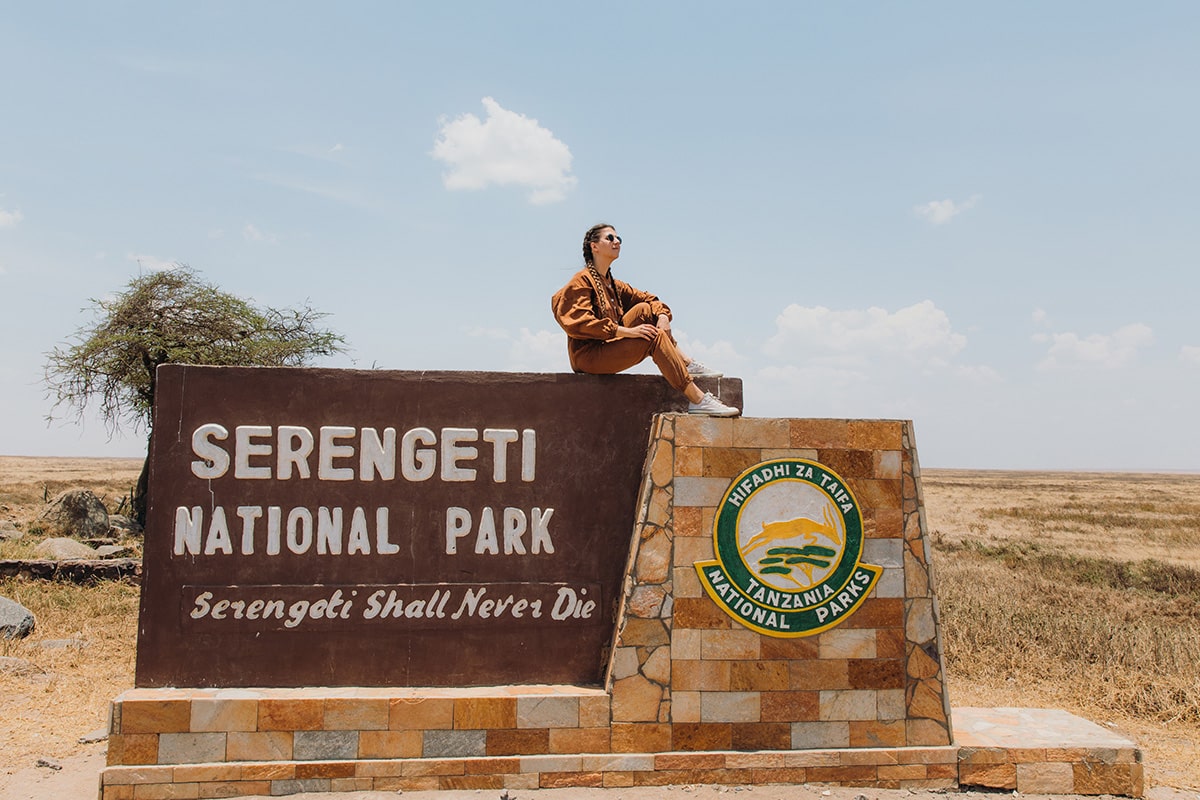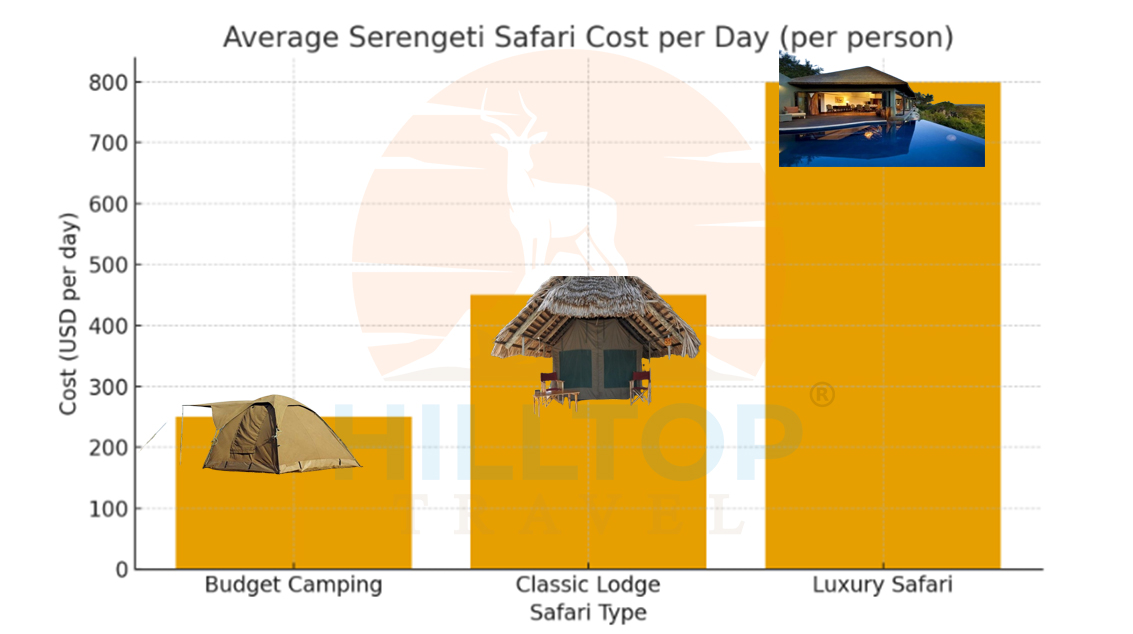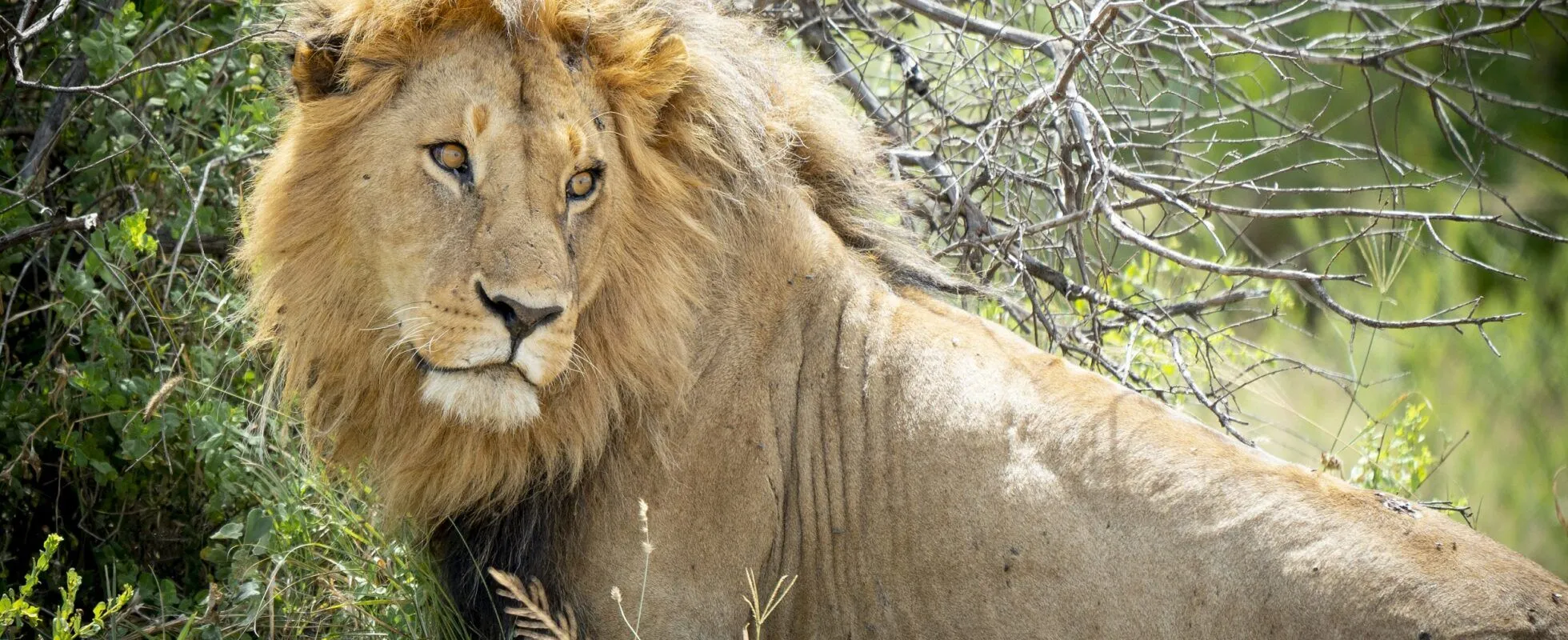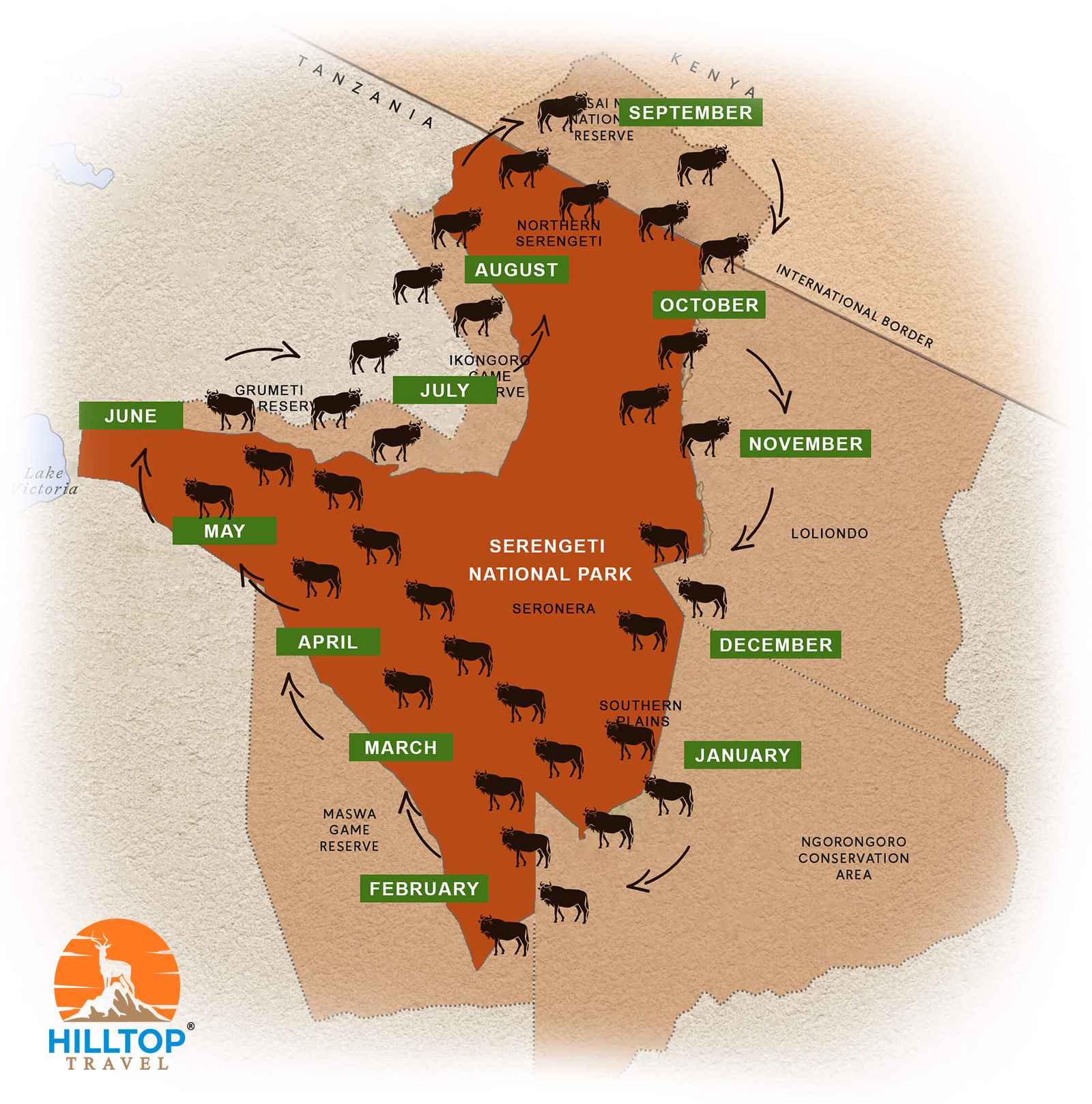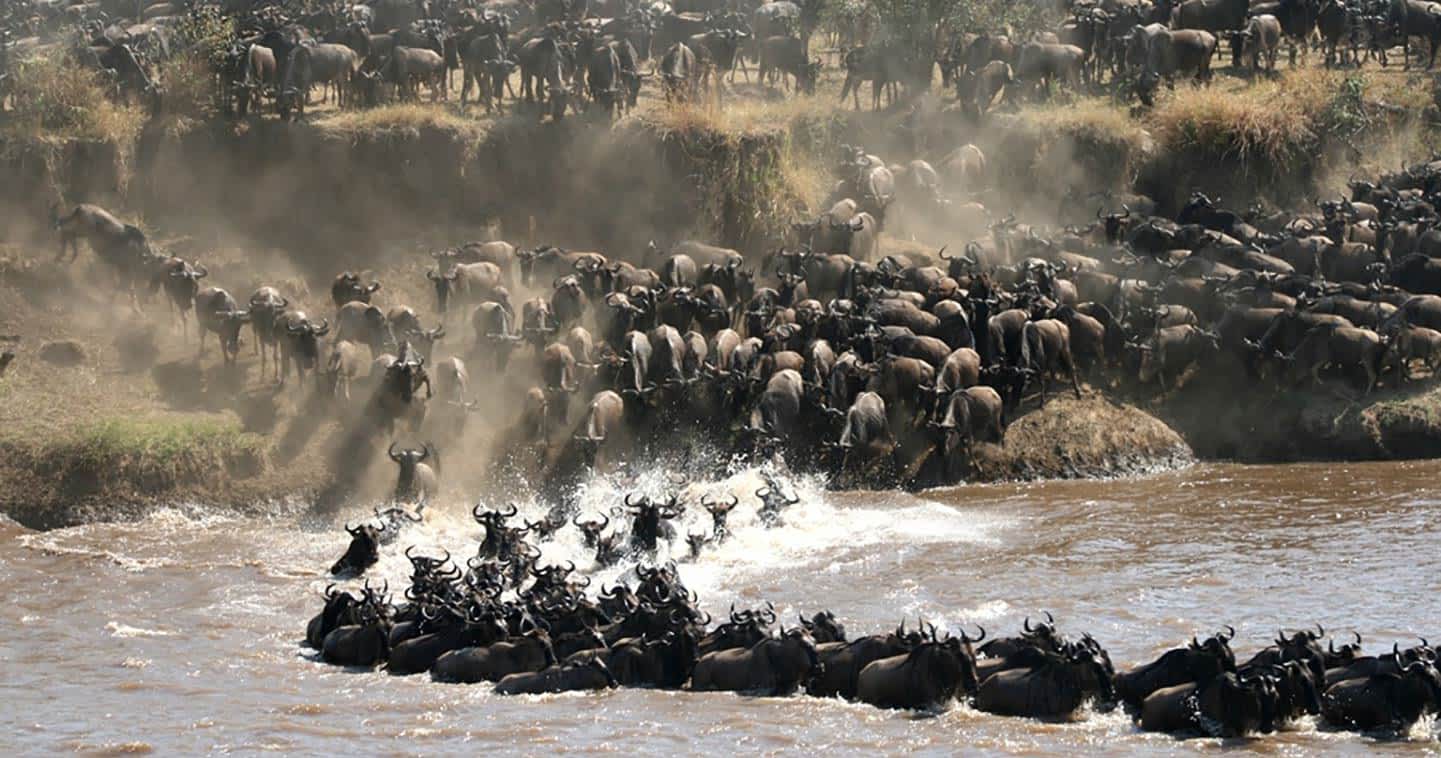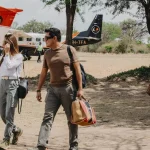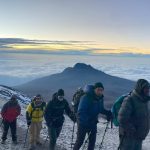How to Book a Serengeti Safari from Arusha or Zanzibar
The Serengeti National Park is one of Africa’s most iconic safari destinations, renowned for its vast plains, abundant wildlife, and the spectacular Great Migration. For travelers based in Tanzania, Arusha and Zanzibar are two common gateways to Serengeti safaris. Arusha, located in the northern highlands, is the traditional starting point for northern circuit safaris, while Zanzibar, an idyllic island off the coast, offers convenient fly-in safari options. In this guide, we’ll walk you through how to book a Serengeti safari from either Arusha or Zanzibar, covering the best times to go, how to choose a tour operator, types of safari packages, costs, visa and park permit info, packing tips, the Great Migration, and transportation logistics. Whether you’re a first-time safari-goer or a seasoned traveler, this comprehensive overview will help you plan an unforgettable Serengeti adventure with Hilltop Travel.
Best Time to Visit the Serengeti
The Serengeti can be visited year-round, but the timing of your trip will influence wildlife viewing and overall experience. The following chart provides a visual summary of the park’s seasonal conditions throughout the year.
Here’s a breakdown of the best times to visit and what to expect each season:
- Dry Season (June to October): This is widely considered the best time for a Serengeti safari. The dry months concentrate wildlife around water sources, making game viewing excellent. The landscape is parched and golden, with sparse vegetation that improves visibility. July to October coincide with the famous Great Migration river crossings in the northern Serengeti and Masai Mara . Many travelers choose the dry season for its reliable weather and high wildlife density . However, this is peak season – expect larger crowds and higher prices.
- Wet Season (November to May): The wet season brings lush green landscapes and fewer tourists. There are two rainy periods: the “short rains” in November–December and the heavier “long rains” from March to May. While wildlife viewing can still be rewarding, animals are more dispersed in the wet season and some roads may become impassable. Many lodges and camps close during the peak of the long rains (April–May). On the plus side, this is the calving season in late January–February when hundreds of thousands of wildebeest calves are born in the southern Serengeti . This time offers fantastic predator action and is considered one of the best hidden gems for a Serengeti safari . Traveling in the shoulder seasons (January–February or November) can give you the best of both worlds – good weather, great wildlife, and lower costs .
Tip: If witnessing the Great Wildebeest Migration is a priority, plan your trip around the herds’ location (see section below for migration timing). Otherwise, the dry season is a safe bet for reliable safari conditions, while the green season offers a quieter experience and excellent birdwatching at a potentially lower cost .
Choosing a Tour Operator and Booking Process
One of the first steps in booking your Serengeti safari is selecting a reputable tour operator. Hilltop Travel is a local Tanzanian tour operator based in Arusha, specializing in personalized safaris and tours. We are committed to providing authentic, high-quality experiences and can help tailor a safari that fits your interests and budget. Here are some tips for choosing and booking with a tour operator:
- Local vs. International Operators: Booking with a local operator like Hilltop Travel (based in Moshi & Arusha) often means better value and personalized service. We handle all arrangements on the ground and have in-depth knowledge of the parks. Many international agencies simply re-sell tours from local companies. When choosing, look for operators registered with the Tanzania Tourist Board and with positive reviews from past clients.
- Check Reviews and Credentials: Before booking, read reviews on platforms like TripAdvisor, SafariBookings, or TourRadar. For example, SafariBookings lists over 3,395 Serengeti safari tours from Arusha offered by 321 operators , making it easy to compare options. Pay attention to feedback about guides, safety, and value for money. Also, verify that the operator has the necessary licenses and insurance.
- Itinerary Customization: A good tour operator will work with you to customize your itinerary. Whether you’re starting in Arusha or Zanzibar, you can choose the duration of your safari (3 days, 5 days, etc.), the style (camping, lodge, luxury), and the parks you want to visit. Hilltop Travel offers both fixed departure group safaris and private safaris that can be tailored to your preferences.
- Booking Process: Once you’ve chosen an operator, the booking process typically involves: requesting a quote or itinerary, finalizing the details, and then securing your reservation with a deposit. Most operators require a deposit (often 20-30% of the total cost) to confirm your booking, with the balance due a few weeks before departure. Make sure to get a written confirmation and safari contract that outlines what is included (and not included) in the price. At Hilltop Travel, we’ll guide you through each step and ensure all your questions are answered before you commit.
- Payment and Cancellation: Be aware of the payment methods (credit card, bank transfer, etc.) and the operator’s cancellation policy. Reputable companies will have clear terms for refunds or rescheduling if your plans change. As a local operator, we strive to be flexible and transparent in our booking terms.
By choosing a trusted operator and planning ahead, you’ll set a solid foundation for a smooth and enjoyable safari experience. In the next sections, we’ll look at the different types of safari packages available and what each entails.
Safari Package Types and Itineraries
Serengeti safaris come in a variety of styles and durations. The right package for you depends on your budget, travel style, and how long you can spend on safari. Here are the main types of safari packages and typical itineraries you can book from Arusha or Zanzibar:
- Budget Camping Safaris: Budget safaris are an affordable way to experience the Serengeti, often using tented campsites and shared accommodation. These trips may be group joining safaris (you’ll share the vehicle and campsite with other travelers) or private camping safaris. Budget packages usually include a 4×4 safari vehicle with a driver-guide, basic campsite fees, simple meals prepared by a cook, and park entry fees. You’ll sleep in tents (either you bring your own or one is provided) and use shared washroom facilities. Example: A 4-day Serengeti camping safari from Arusha might visit Lake Manyara, Serengeti, and Ngorongoro Crater for around $1,350 per person . Budget safaris are great for adventurous travelers who don’t mind a bit of roughing it and want to maximize time on safari for their money.
- Mid-Range Lodge/Tented Camp Safaris: Mid-range packages offer a bit more comfort, typically staying in permanent tented camps or small lodges inside or near the parks. These accommodations have en-suite bathrooms, comfortable beds, and sometimes even electricity or solar power. Mid-range safaris can be private or small group tours. They often include higher-quality meals and a few extra amenities. Example: A 5-day Serengeti safari staying in mid-range lodges might cost on the order of $2,000–$3,000 per person, depending on the season and specific camps. Many mid-range itineraries cover the classic Northern Circuit (Arusha → Tarangire → Lake Manyara → Serengeti → Ngorongoro Crater) over 5-7 days, giving you a well-rounded experience of Tanzania’s top parks.
- Luxury Safaris: Luxury safaris provide the highest level of comfort and exclusivity. You’ll stay in upscale lodges or luxury mobile camps with top-notch service, fine dining, and often private guides and vehicles. These trips can be tailored entirely to your schedule and interests. Luxury options might include flying between parks in small charter planes to save time, or booking private concessions for a more secluded experience. Prices for luxury safaris are significantly higher – for instance, a 7-day luxury safari in the Serengeti and Tarangire can start around $10,000 per person . However, they offer unparalleled wildlife viewing and comfort. If budget allows, a luxury safari is an incredible once-in-a-lifetime experience.
- Fly-In Safaris (From Zanzibar or Dar es Salaam): If you’re starting your trip in Zanzibar, a popular option is a fly-in safari. Instead of a long drive, you’ll take a scheduled or chartered flight from Zanzibar (or Dar es Salaam) to an airstrip in the Serengeti (such as Seronera in the central Serengeti or Kusini in the south). Fly-in safaris save a lot of travel time and are often paired with lodge or luxury camps. Many fly-in packages are 3 to 5 days long. For example, a 3-day Serengeti fly-in safari from Zanzibar might include a flight to the Serengeti, two full days of game drives, and a flight back to Zanzibar. These packages typically cost a bit more due to the flights, but they are very convenient. SafariBookings lists over 615 Serengeti safari packages starting from Zanzibar , including various fly-in options. Hilltop Travel can arrange domestic flights and coordinate your safari so that you can seamlessly go from Zanzibar’s beaches to the Serengeti’s savannah in a single trip.
- Combination Safaris (Safari + Beach): Many travelers combine a Serengeti safari with a beach stay in Zanzibar (or vice versa). There are combo packages that include both the safari and a few nights on Zanzibar’s coast. These range from 8 to 14 days and allow you to experience the best of Tanzania – wildlife and relaxation. For instance, an 11-day package might cover a week-long safari (Serengeti, Ngorongoro, Tarangire, etc.) followed by 4 days in Zanzibar . Combining your safari and beach stay in one package can simplify logistics and sometimes save money compared to booking separately. Hilltop Travel can help you create the perfect combo itinerary so you don’t have to worry about the details of connecting your safari with your Zanzibar accommodation.
Typical Itinerary Examples:
- 3-Day Serengeti & Ngorongoro Safari (from Arusha): A popular short itinerary is a 3-day trip that includes one night in the Serengeti and one night at Ngorongoro Highlands. Day 1: Drive from Arusha to Serengeti (stopping at Lake Manyara or Tarangire briefly if time allows), with an afternoon game drive in Serengeti. Day 2: Full day in Serengeti with morning and afternoon game drives (possibly staying in the central Seronera area). Day 3: Early morning game drive, then drive to Ngorongoro Crater, descend into the crater for a game drive, and return to Arusha. (This is a fast-paced trip – some opt for 4 days to make it more relaxed.)
- 5-Day Northern Circuit Safari (from Arusha): This classic itinerary covers multiple parks. Day 1: Arusha to Tarangire National Park (game drive, overnight in Tarangire area). Day 2: Drive to Lake Manyara (morning game drive) then continue to Serengeti (afternoon game drive, overnight in Serengeti). Day 3: Full day Serengeti game drives (overnight in Serengeti). Day 4: Drive to Ngorongoro Highlands (afternoon at Ngorongoro Conservation Area, possibly a short hike or visit a Maasai village, overnight at Ngorongoro). Day 5: Ngorongoro Crater game drive in the morning, then drive back to Arusha. This 5-day loop hits the highlights of Tarangire, Lake Manyara, Serengeti, and Ngorongoro.
- Fly-In Safari (from Zanzibar): Example of a 4-day fly-in: Day 1: Fly from Zanzibar to Serengeti (morning flight), afternoon game drive in Serengeti (overnight in central Serengeti). Day 2: Full day in Serengeti (morning and afternoon game drives, overnight). Day 3: Morning game drive, then fly to Arusha or Ngorongoro area (depending on itinerary), afternoon at leisure or visit Ngorongoro Crater rim. Day 4: Ngorongoro Crater game drive, then fly back to Zanzibar or continue to your next destination. This kind of itinerary maximizes time in the park and minimizes road travel.
Remember, these are just examples – itineraries can be adjusted. Whether you prefer a short safari or an extended adventure, there are packages to suit every schedule. The next section will give you an idea of how much these safaris typically cost so you can plan your budget.
Estimated Costs and Budgeting
Serengeti safari costs can vary widely based on the type of package, duration, and level of comfort. The following chart illustrates the typical daily costs across different safari styles.
Here’s a breakdown of estimated costs for different types of safaris to help you budget:
- Budget Safaris: Budget camping safaris are the most economical option. Prices usually range from about $300 to $500 per person per day. For example, a 3-day budget camping safari might cost around $1,000–$1,500 per person. These prices often include park fees, camping gear, meals, and a driver-guide, but may exclude international flights, travel insurance, tips, and personal expenses. Keep in mind that budget safaris may use shared transport and accommodation, and you’ll be camping, which helps keep costs low. If you’re on a tight budget, joining a group camping safari is a great way to experience the Serengeti affordably.
- Mid-Range Safaris: Mid-range safaris (staying in lodges or mid-tier tented camps) typically cost $400 to $800 per person per day. A 5-day mid-range safari could be in the range of $2,500–$4,000 per person. Mid-range packages include more comfortable lodging and often a higher standard of guiding and meals. Park fees and activities are usually included. The extra cost over a budget safari buys you things like en-suite bathrooms, better meals, and sometimes smaller group sizes. This is a good balance for those who want comfort but still want a reasonable price.
- Luxury Safaris: Luxury safaris offer top-of-the-line comfort and can cost $800 to $1,500+ per person per day. For instance, a 7-day luxury safari might start around $10,000 per person . These prices reflect exclusive lodges or camps, private guides and vehicles in some cases, gourmet dining, and unique experiences. Luxury safaris often include internal flights, premium drinks, and special activities (like bush dinners or guided walks). If money is no object, a luxury safari provides an unparalleled experience, but even mid-range safaris in the Serengeti are quite comfortable by most standards.
- Fly-In Safaris: Adding flights to your safari will increase the cost. A round-trip flight from Arusha or Zanzibar to the Serengeti can cost anywhere from $300 to $600 per person, depending on the airstrip and season. Fly-in safari packages that include these flights will therefore be pricier than road safaris of the same duration. However, they save a lot of time. As an example, a 4-day fly-in safari (with 2 domestic flights) might cost around $3,000–$4,000 per person for a mid-range package, whereas the equivalent road safari might be a bit less. It’s a trade-off between time and money.
- Park Fees and Other Costs: It’s important to note that park entrance fees and other permits are significant components of safari costs. For 2025, the Serengeti National Park entry fee is about $70 per adult per day for foreign non-residents . The Ngorongoro Crater Conservation Area fee is around $80 per adult per day, plus an additional crater descent fee (about $200 per vehicle) if you go into the crater . Many safari packages quote prices inclusive of these park fees, so you don’t pay them out of pocket. But if you’re customizing a trip, make sure to factor these in. Other costs to budget for include visa fees (typically $50 for most nationalities, $100 for US citizens), travel insurance, tips for guides and camp staff (usually around $10-$15 per person per day for a guide, and a few dollars per day for camp staff), and any optional activities (like hot air balloon safaris in Serengeti, which can be $500+ per person).
To give a concrete example: A 3-day Serengeti & Ngorongoro safari in a mid-range lodge might cost roughly $1,350–$1,400 per person . This price would usually cover accommodations, meals, park fees, a professional driver-guide, and transportation in a 4×4 safari vehicle. Flights, visas, insurance, and gratuities would be extra. If you’re traveling in a group of 2-4, you can also consider a private safari, which might cost a bit more per person than a group safari but offers flexibility in your itinerary.
At Hilltop Travel, we believe in transparent pricing. We’ll provide you with a detailed quote that breaks down all the costs, so you know exactly what’s included. By understanding the cost components, you can make informed decisions about what level of safari best fits your budget.
Visa and Park Permit Requirements
Before embarking on your Serengeti safari, you’ll need to ensure you have the proper travel documents and permits. Here’s what you need to know about visas and park permits for a Tanzania safari:
- Tanzania Tourist Visa: Most foreign visitors to Tanzania require a tourist visa. As of 2025, Tanzania offers an eVisa (electronic visa) that can be applied for online in advance, as well as visa-on-arrival at the airport. The visa fee is $50 USD for citizens of most countries (including the UK and EU) and $100 USD for US citizens . Some nationalities (e.g. citizens of some African countries) may be visa-exempt. The application process involves filling out an online form, paying the fee, and then printing your eVisa to bring with you. You can also obtain a visa upon arrival at Kilimanjaro International Airport (JRO) or Julius Nyerere International Airport (DAR) in Dar es Salaam, or at land borders, by filling out a form and paying the fee in cash (US dollars are usually accepted). Tip: Applying for the eVisa ahead of time can save you time at the airport. Make sure your passport is valid for at least 6 months beyond your trip dates and has at least one blank visa page . Also, check if your country requires a yellow fever vaccination certificate – if you’re coming from a country with risk of yellow fever, you’ll need an international certificate of vaccination.
- Serengeti National Park Entry Permit: All visitors to Serengeti National Park must pay the daily park entrance fee. As mentioned, for foreign non-residents this is currently $70 per adult per 24-hour period . Children aged 5-15 pay a reduced fee (around $20 per day), and children under 5 are free . These fees are typically collected by your tour operator upon entering the park or included in your safari package price. Keep in mind that the fee is per day – so a 3-day stay in Serengeti would incur 3 days’ worth of park fees. The park entry fee helps fund conservation efforts in the Serengeti.
- Ngorongoro Conservation Area (NCA) Permit: If your safari includes a visit to the Ngorongoro Crater or the highlands area, you’ll need to pay the NCA conservation fee. This is $80 per person per day for foreign visitors . Additionally, if you descend into the Ngorongoro Crater for a game drive, there is a crater service fee of about $200 per vehicle (regardless of how many people are in the vehicle) . This crater fee is usually split among passengers if you’re in a shared safari vehicle. These fees are often included in safari packages that go to Ngorongoro, but it’s good to confirm. The Ngorongoro fees support the conservation of that unique ecosystem and the local Maasai communities.
- Other Park Fees: If your itinerary includes other parks like Tarangire or Lake Manyara, each has its own entry fee (generally around $50 per person per day for non-residents in 2025 ). Again, these are usually covered if you book a package that visits those parks. Also, if you plan any special activities – such as a guided walk in a controlled area, a hot air balloon safari, or a cultural visit to a Maasai village – there may be additional fees or permits required for those.
- Driver/Guide and Vehicle Permits: It’s worth noting that safari vehicles require permits to enter the parks, and your tour operator will handle obtaining those. The driver/guide also needs proper licensing. When you book with a reputable company like Hilltop Travel, you can be confident that all necessary permits (for the vehicle, guide, and any special activities) are in order. We ensure that your safari is fully compliant with park regulations.
To summarize, the key documents you need are a valid passport, a Tanzania visa, and you’ll pay park entry fees upon entering the national parks. By taking care of your visa ahead of time and confirming that your safari package includes park permits, you can avoid any last-minute hiccups. Next, we’ll go over what to pack for your Serengeti adventure so you’ll be prepared for the safari experience.
What to Pack for Your Serengeti Safari
Packing the right gear and clothing will make your Serengeti safari more comfortable and enjoyable. The Serengeti has a mix of warm days and cool nights, and you’ll want to be prepared for both. Here’s a list of essential items to pack for your safari:
- Clothing: It’s best to dress in neutral, earth-toned colors (khaki, olive, brown, beige) for safari, as bright colors or patterns can scare animals or attract tsetse flies. Long-sleeved shirts and long pants are recommended for game drives to protect you from the sun, dust, and insects. You’ll also want a few short-sleeved shirts or t-shirts for warmer afternoons. Lightweight, breathable fabrics (like cotton or linen) work well for daytime, while a fleece jacket or warm sweater is essential for early morning and evening game drives when temperatures can drop. It can be surprisingly chilly at dawn (sometimes even near freezing at higher elevations), so many safari-goers wear a puffer jacket or fleece and maybe a beanie during the morning drive, then shed layers as the day warms up . Don’t forget a rain jacket or poncho if you’re traveling in the wet season – afternoon thunderstorms can happen, and a lightweight waterproof layer will keep you dry. Also pack a hat (wide-brimmed or bucket hat) to shield you from the strong equatorial sun, and possibly a scarf or bandana to cover your face on dusty roads.
- Footwear: Comfortable, closed-toe shoes are a must. Hiking boots or sturdy sneakers are great for walking around camps and on any optional nature walks. You’ll spend a lot of time in the safari vehicle, so you might also want a pair of slip-on camp shoes or sandals for relaxing at the lodge/camp in the evenings. Avoid flip-flops for game drives – you’ll want something secure on your feet. Also, remember that it can be cold in the mornings, so your shoes should be comfortable even if you need thick socks with them.
- Sun Protection: The African sun is intense. Pack sunscreen (SPF 30 or higher) and apply it daily, especially during game drives when you’re exposed in the open vehicle. Sunglasses with UV protection are also essential to protect your eyes. A sun hat (as mentioned above) is another key item for sun protection. Consider packing lip balm with SPF as well.
- Insect Repellent: Mosquitoes are present in Tanzania, and while the Serengeti’s high elevation means malaria risk is lower than in some areas, it’s still wise to take precautions. Use an insect repellent with DEET or another effective ingredient, especially around dawn and dusk. Long sleeves and pants at those times also help. Some people bring permethrin-treated clothing or a mosquito net for extra safety, although most safari camps provide mosquito nets or have screened tents/lodges. It’s also recommended to consult your doctor about malaria prophylaxis before your trip.
- Personal Medications and First Aid: Bring any prescription medications you take, along with extra in case your trip is extended. Also include a basic first aid kit with items like band-aids, antiseptic, diarrhea medication, motion sickness tablets (for long drives), and any other personal medications you might need. It’s a good idea to have altitude sickness medication if you plan to climb Kilimanjaro or Meru, but that’s separate from the safari. Your safari vehicle will typically carry a first aid kit as well, but having your own essentials is smart.
- Camera and Binoculars: No safari packing list is complete without a camera (and extra memory cards/batteries) to capture those amazing wildlife moments. A telephoto lens is very useful for zooming in on animals. If you don’t have a DSLR, a good smartphone camera can also work, especially with a telephoto attachment. Binoculars are highly recommended – they allow you to spot animals and birds that are far away or hidden in the grass. Many safari vehicles have a pair you can borrow, but having your own is convenient. Don’t forget to pack a universal power adapter for charging your devices – Tanzania uses Type G plugs (three rectangular prongs), and voltage is 220V. Most mid-range and luxury camps/lodges have electricity (sometimes solar or generator-powered with limited hours), and even budget camps often have a charging station or solar charger for devices.
- Day Pack: A small day pack or backpack will come in handy for carrying your daily essentials during game drives. You can put your camera, binoculars, water bottle, sunscreen, hat, and a light jacket in it. This keeps your hands free and your items organized while out on safari.
- Toiletries: Bring travel-sized toiletries including toothpaste, toothbrush, deodorant, hand sanitizer (important since you won’t always have running water available immediately), and wet wipes. Some camps provide basic soap or shampoo, but it’s safer to bring your own. Also, if you prefer, you can pack a quick-dry towel for showers or lake visits.
- Travel Documents: Keep your important documents in a safe, accessible place. This includes your passport (with visa), airline tickets or e-ticket printouts, travel insurance documents, and any emergency contact information. It’s a good idea to have photocopies of your passport and visa stored separately in case of loss. If you’re doing a fly-in safari, carry your flight tickets or confirmation in your day pack.
- Money and Miscellaneous: You may want to carry some cash (Tanzanian Shillings or US Dollars) for small expenses – like souvenirs, tipping, or buying drinks. Credit cards are accepted in larger towns and some lodges, but not in the middle of the Serengeti, so cash is useful. Also, consider bringing a flashlight or headlamp for navigating around camp at night (when it’s pitch dark) – many camps provide these, but having your own is handy. Finally, a reusable water bottle is a great item to have; many safari operators provide filtered water or you can refill from dispensers, so you can avoid single-use plastic bottles.
When packing, keep in mind that on safaris you typically don’t need formal clothing – it’s all about comfort and practicality. Also, if you’ll be flying on a small plane (like a domestic flight to Serengeti), there are usually strict weight limits (often 15 kg or 33 lbs per person for luggage, in soft-sided bags). So pack light and use a duffel bag or soft suitcase rather than a hard-shell one. By packing these essentials, you’ll be well-prepared for game drives, bush meals, and everything the Serengeti has in store.
Great Wildebeest Migration Timing and Viewing Tips
One of the main reasons travelers flock to the Serengeti is to witness the Great Wildebeest Migration – nature’s most spectacular wildlife show. Over a million wildebeest, accompanied by zebras and gazelles, move in a circular pattern across the Serengeti-Mara ecosystem in search of fresh grazing and water. Their location varies throughout the year, following the rains. The annual cycle of this migration is a key factor in planning the timing of your safari, as illustrated in the following chart.
Here’s a month-by-month guide to the migration’s general location and viewing tips:
- January – March: The herds are typically in the southern Serengeti and Ndutu area (part of the Ngorongoro Conservation Area). This is the calving season, when hundreds of thousands of wildebeest calves are born. The grass is green from the short rains, and predators like lions and cheetahs take advantage of the abundance of young prey. This is an excellent time for predator sightings and seeing the plains dotted with herds. Lodges in the southern Serengeti (like Ndutu or Kusini) are ideal this time of year.
- April – May: As the long rains continue, the herds start moving westward across the Serengeti. By April, they’re often spread out in the southwest Serengeti, and by May they begin heading toward the Western Corridor (around Grumeti River). The landscape is lush, and wildlife viewing can still be good, though the herds are more dispersed. Many camps in the south close by April, and focus shifts to the west. May is sometimes called “the green season migration” – it’s a quieter time to see the migration with fewer tourists, but you should be prepared for rain.
- June: June marks the start of the dry season and the herds concentrate along the Western Corridor of the Serengeti, particularly around the Grumeti River. This is when the first river crossings often occur, as the wildebeest attempt to cross the Grumeti (which has resident crocodiles). June is considered one of the best times to be in the Western Corridor for migration viewing . The vegetation is starting to thin out, making wildlife easier to spot. It’s also before peak season crowds, so you can enjoy the spectacle with relatively fewer vehicles.
- July – August: By July, a large portion of the herd has moved into the northern Serengeti (Lobo and Mara River area). This is when the famous Mara River crossings usually begin. The wildebeest gather on the Serengeti side of the Mara River and attempt to cross into Kenya’s Maasai Mara. These crossings are dramatic and dangerous – crocodiles lie in wait, and the wildebeest must contend with steep banks and strong currents. August sees many crossings, and this period is often the highlight of the migration season. If you want to witness a river crossing, being in the northern Serengeti in July or August gives you a high chance (though no sighting is guaranteed in nature). Lodges/camps in the northern Serengeti (like Kogatende or Mara North area) are the place to be.
- September – October: The herds are mostly in the Maasai Mara National Reserve in Kenya during September, but the northern Serengeti still has plenty of wildlife as stragglers and some herds remain. By October, the rains start to beckon them back south. You might see herds beginning to move southward through the northern Serengeti towards the Loliondo area in October. September is still a great time for wildlife in the Mara/Serengeti region (many consider it one of the best months for predator action as the plains are dry). If you visit Serengeti in October, you could catch the tail end of the migration in the north or early movement back south.
- November – December: The short rains usually begin in November, and the wildebeest start trekking south again across the Serengeti. By December, many are back in the central Serengeti (Seronera area) and heading toward the southern plains. November can still have some crossings in the Mara River if rains are late, but generally the movement is southward. December finds the herds on the edge of the southern Serengeti or in the Ndutu area, setting up for calving season again. This period is a bit quieter and a good time to visit the Serengeti with fewer tourists; you can see the herds on the move and enjoy the greening landscape.
Viewing Tips: To maximize your chances of seeing the migration:
- Plan your Serengeti visit in the area where the herds are expected to be (e.g., south in Jan-Feb, west in June, north in July-Aug). Your tour operator can advise on the best camps or lodges to stay at for the time of year.
- Consider a flexible itinerary – sometimes the timing of rains can shift the migration by a few weeks. Many camps in the Serengeti are mobile or have multiple locations to follow the herds.
- When watching river crossings, be patient – the wildebeest can take hours or days to build up the courage to cross. Your guide will position you near a likely crossing point, and you may spend a morning waiting. It’s worth it when they finally go!
- Remember that the migration is not just about wildebeest – it’s an ecosystem event. Wherever the herds are, you’ll find predators (lions, leopards, cheetahs, hyenas) lurking nearby, as well as other plains game. Even if you don’t witness a dramatic river crossing, the sheer density of wildlife during migration season is awe-inspiring.
Hilltop Travel can help you plan your trip around the Great Migration. Whether you want a front-row seat to a river crossing or prefer a quieter experience during calving season, we’ll create an itinerary that aligns with your wildlife viewing goals.
Transportation to and from the Serengeti
Getting to the Serengeti from Arusha or Zanzibar involves a combination of flights and/or road transfers. Here’s a look at the transportation options and logistics for reaching the Serengeti from these two starting points:
- From Arusha (Northern Tanzania): Arusha is the gateway to Tanzania’s northern safari circuit. Most travelers fly into Kilimanjaro International Airport (JRO), which is about 45 minutes from Arusha town, or directly into Arusha Airport (ARK), a smaller airport. From Arusha, you have two primary ways to get to Serengeti National Park:
- By Road: A road safari from Arusha to Serengeti typically takes around 6 to 8 hours driving time, depending on which part of the Serengeti you’re going to (the central Seronera area is roughly 320 km from Arusha). Safari vehicles will usually make stops along the way – for example, visiting Tarangire National Park or Lake Manyara on Day 1 of a multi-day itinerary. Many 3-day or longer safaris include the drive as part of the adventure, allowing you to start game viewing en route. Keep in mind that the roads are mostly dirt and can be bumpy; however, it’s an opportunity to see the Tanzanian countryside and maybe spot some wildlife even before entering the Serengeti. If you opt for a private safari, you have the flexibility to stop when you see something interesting. For shorter trips, some people choose to drive one way and fly back to save time.
- By Air: Flying is the fastest way to reach the Serengeti from Arusha. There are daily scheduled shuttle flights from Arusha Airport (or Kilimanjaro Airport) to several airstrips inside the Serengeti, such as Seronera Airstrip (central Serengeti), Kogatende Airstrip (northern Serengeti), Fort Ikoma or Grumeti (western Serengeti), and Kusini or Ndutu (southern Serengeti). The flight takes roughly 1 hour to the central Serengeti and a bit longer to the northern airstrips. This option is highly recommended if you have limited time or prefer to minimize travel on bumpy roads. Safari operators can arrange your flight and have a driver meet you at the airstrip for the transfer to your camp or lodge. Round-trip airfares from Arusha to Serengeti are usually in the range of $300–$600 per person, depending on the airstrip and season. Some travelers do a combination: fly to Serengeti and drive back, or vice versa, to experience both.
- From Zanzibar: If you’re starting your journey on the island of Zanzibar, you will need to fly to the mainland or directly to a Serengeti airstrip. There are daily flights from Zanzibar (ZNZ) to Arusha (ARK) (about 1 hour) and to Dodoma or Dar es Salaam (with onward connections). Many safari packages from Zanzibar include a flight from Zanzibar to Arusha or Kilimanjaro Airport, then a road transfer or connecting flight to Serengeti. Alternatively, some packages offer a direct flight from Zanzibar to a Serengeti airstrip. These flights often go via Dar es Salaam or Arusha (with a change of plane), but some operators charter flights. The total flight time from Zanzibar to Serengeti is roughly 2–3 hours including connections. Tip: If you’re short on time, a fly-in safari from Zanzibar is ideal – you can leave Zanzibar in the morning and be on a game drive in the Serengeti by lunchtime. SafariBookings notes that there are over 600 safari packages starting from Zanzibar, many of which are fly-in safaris . After your safari, you’ll typically fly back to Zanzibar (or to Kilimanjaro Airport for your international departure). Hilltop Travel can coordinate all these transfers so that you have a smooth journey from beach to bush.
- Internal Transfers and Logistics: Once you arrive at the Serengeti airstrip or park gate, your tour operator will handle the transfer to your accommodation. Inside the park, travel is by 4×4 safari vehicle. Most safari itineraries include all ground transportation once you start the safari. If you have an early morning flight from Arusha to Serengeti, your operator might arrange for you to stay the night before in Arusha (many safaris start with an overnight in Arusha or Moshi to catch an early flight). Likewise, if you’re ending your safari and flying out, they’ll ensure you arrive at the airstrip in time for your flight. It’s common for safari vehicles to also double as your transport to/from airports – e.g., you might drive from your last lodge to an airstrip and then fly back to Arusha or Zanzibar.
- Road Conditions: It’s important to be aware that roads in and around the Serengeti can be rough. The main routes are gravel or dirt tracks. During the wet season, some roads may become impassable, so always listen to your guide’s advice and stick to designated tracks. Safari vehicles are well-equipped for these conditions (high clearance, 4WD), and drivers are experienced. The upside is that even the drive itself can be part of the adventure, with frequent wildlife sightings right from the vehicle.
- Returning to Arusha or Zanzibar: At the end of your safari, you’ll either drive or fly back to your starting point. Many itineraries are circular – e.g., you depart Arusha, do a loop through the parks, and return to Arusha. If you flew in, you might fly back out of Serengeti. From Zanzibar, typically you’ll fly to the mainland to start the safari and fly back to Zanzibar to end it. Hilltop Travel will provide you with a detailed itinerary that includes all transportation segments, so you’ll know exactly how you’re getting from one place to another and how long it will take.
By understanding the transportation options, you can choose what suits your schedule and comfort level. Whether you prefer the scenic drive or the quick flight, we’ll ensure you reach the Serengeti safely and on time to begin your safari adventure.
Conclusion
Embarking on a Serengeti safari from Arusha or Zanzibar is an exciting endeavor that will reward you with unforgettable wildlife encounters and stunning landscapes. By planning ahead and choosing the right safari package, you can make the most of your trip. Remember to consider the best time to visit based on what you want to see, select a reputable tour operator (like Hilltop Travel) to handle your arrangements, and decide on the type of safari experience that fits your budget and style – whether it’s a rugged camping adventure or a luxurious lodge safari. Don’t forget to secure your visa and permits in advance and pack appropriately for the African bush.
Whether you’re watching a sunrise over the Serengeti plains, spotting the Big Five on a game drive, or marveling at the thunderous hooves of the Great Migration, a Serengeti safari is sure to be a trip of a lifetime. With this guide, you’re well-equipped to book your safari with confidence. We at Hilltop Travel are here to help you every step of the way – from crafting your perfect itinerary to ensuring you have a safe and incredible time on safari. Get ready to create memories that will last forever in the heart of Tanzania’s Serengeti National Park!

